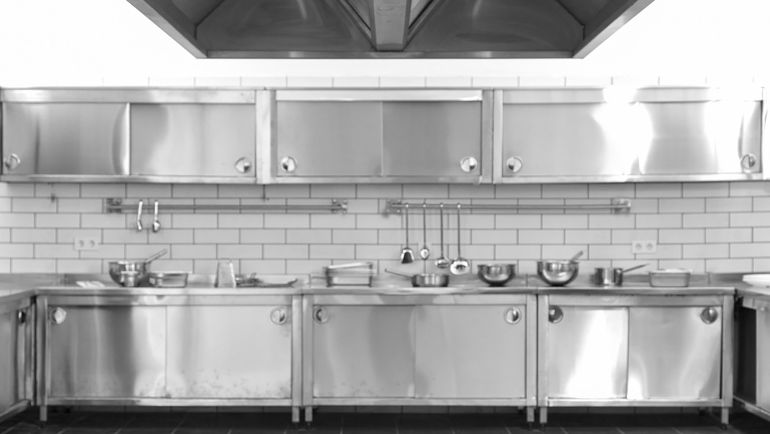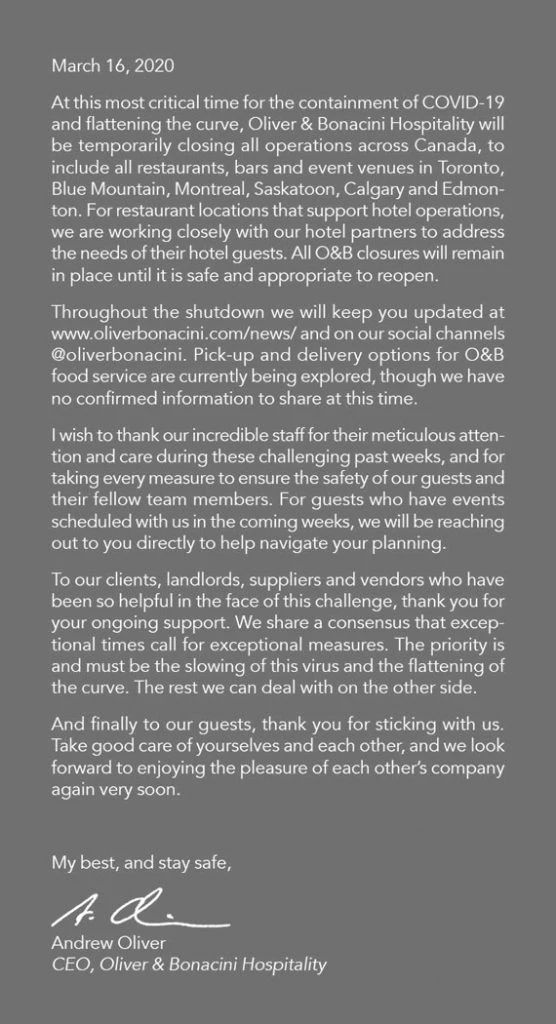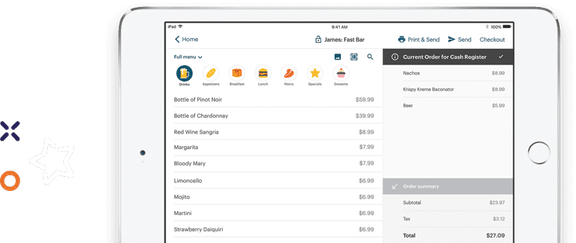Restaurant owners have been forced to rethink their business with the spread of COVID-19 and this has caused a lot of uncertainty around how to address these changes with staff and guests.
A restaurant communication plan that has been thoughtfully crafted can alleviate some of the uncertainty, boost confidence in those around you, and help you plan for the future.
Have you had to shut down your operations? Have you moved your business exclusively to takeout and delivery? Is what you’re communicating too serious? Or not serious enough?
In this guide, we’ll give you everything you need to put together your own restaurant communication strategy, including:
- What to say to your staff
- What to say to your guests
- How to communicate it best
- Examples of what other restaurants are sharing with their audience

Communicating to Your Staff
Your staff are feeling uneasy about what coronavirus means for their employment, now and in the future.
If they are staying on to help you facilitate a new business model, what steps are you taking to protect them from exposure? If they are being let go, will they be able to apply for the support they need?
What to Tell Your Staff
1) This is not their fault
There’s going to be a lot of anxiety surrounding the changes, and feelings of guilt or anger are often coupled with that anxiety.
Reassure your team that these measures are being put in place because of extraordinary circumstances and that you are managing this together as a team.
No one is being singled out and no one is being left behind.
2) You are committed to doing everything you can for them
Some of the changes you must enact will negatively impact your staff, and they’ll be looking to you for leadership. Be upfront and empathetic with your team.
They’ll be less upset about the sudden changes if they feel like you have their best interests in mind and are committed to their wellbeing in the long term.
3) Clearly outline the things you’re going to do for them
Whether your staff will be staying on to facilitate takeout and delivery, or if you will be letting them go, outline all the steps you’ll be taking to help make their transition as smooth as possible.
What resources will you make available, what documentation will you expedite for them, what steps will you be taking to ensure their safety – let them know every step.
4) This is temporary
There will always be ebbs and flows in business. This might be a big ebb, but this too shall pass. Remind your team of that – often.
Also, outline the plan for the immediate few weeks and be sure to loop them in on any new developments as they happen. You may not be able to commit to a plan with a specific timeframe right now and that’s okay – communicate as much as you can, when you can.
Best Ways to Tell Them
Have these conversations in person if possible. Phone or video also work, along with a follow-up email.
These are the kinds of updates that are best delivered in person, so you can answer any follow-up questions. If you can’t do it face-to-face, organize a team phone or video call. Make sure your team has access to you.
Once you’ve had the conversation, make sure to recap what was discussed and your next steps in an email, so that everyone has clarity on what’s happening.

Communicating to Your Guests
Your guests care about you – a lot – and they want to see you weather this storm.
Many are even willing to help you during this time. To help them do so, you need to let them in on your restaurant communication plan.
What to Tell Your Guests
1) Your cleaning policies
The safety of everyone who interacts with your restaurant is paramount. Guests are usually aware that restaurants have to follow strict guidelines for health and safety. But it’s never a bad idea to reiterate for them what’s being done to keep your operating areas clean and your food safe to eat. Outline standard procedures and what you’re doing to go above and beyond.
A little confidence building will go a long way for guests who are paying close attention to what goes near their faces.
2) If you’re moving to takeout and delivery, exclusively
Many restaurants have had to shut down their dining rooms and move to takeout and delivery as their primary operation. If this includes your venue, publish an update on social media about how your guests can still order food through you.
Push any relevant updates to your listings in Google and on any third-party delivery and reservation apps.
If takeout and delivery are new methods for you, be transparent with your guests. They will understand any hiccups that may result from this change in process.
3) If you’re limiting your hours
Whether you’re switching to takeout and delivery or just reducing your dine-in capacity, guests need to know if you’re still open during the same hours.
Even if you’ve already posted about your hours once on social media, don’t assume everyone’s seen it. Publish the message a few times throughout the week to ensure you get it out to your entire audience and no one is left standing outside your closed doors.
4) Messages of encouragement
Your restaurant is part of a community and you are all in it together. Everyone could use a little hope right now.
You may not know what the outcome of this pandemic will be, but your restaurant communication plan that shares a positive outlook on how you’re weathering the storm will help keep spirits high.
5) If you need financial support
The U.S. restaurant industry is poised to lose $225 billion in the short term, according to a letter sent by the National Restaurant Association to President Trump and members of Congress.
If your restaurant is under threat of closure on a more permanent basis, don’t be afraid to ask for support from your guests.
Be clear about exactly what they can do to help, whether that’s purchasing gift cards directly from you, sharing your message, or more.
In all of the above communications, it’s important (and entirely okay) to write and speak in your brand voice. Take the matter seriously and bring confidence to those you’re sharing this with, but be yourself – write in the voice they’re used to hearing, the voice of you as a restaurant owner.
If you have a brand known for being a little cheekier, include some of that in your communication. Sometimes people need a little levity at a time like this.
Speaking your brand language will also help reinforce that you know your audience and that you’re part of the community.
Best Ways to Tell Them
Use every platform you’ve got.
- Update your website and/or include a pop up on the home page.
- Publish on all your social media channels. Don’t leave any out.
- Email your mailing list (you’ve been building a mailing list, right?).
- Include flyers in all takeout and delivery orders.
- Post a notice on your front door.
- Update your outgoing voicemail greeting.
What Are Other Restaurants Saying?
For inspiration on your own communications, we’ve rounded up a few restaurant communication plan samples:
Social Media
Rustle & Still Café
Steam Whistle Brewing
Léa French Street Food
Oliver & Bonacini

Website
Create Your Restaurant Communication Plan Now
With a proper COVID-19 communication strategy for your restaurant, you will be able to make your staff feel safe and supported, and your guests feel confident and able to support you through this difficult time. You’ll minimize any upsets through clarity and honesty, and help lead your community through this storm.
Most importantly, you’ll stand united with your fellow restaurateurs who are all in the same boat.
For more tools to help you manage through COVID-19, visit our resource page. Can’t find what you’re looking for? Let us know what you’d like help with, at [email protected]






